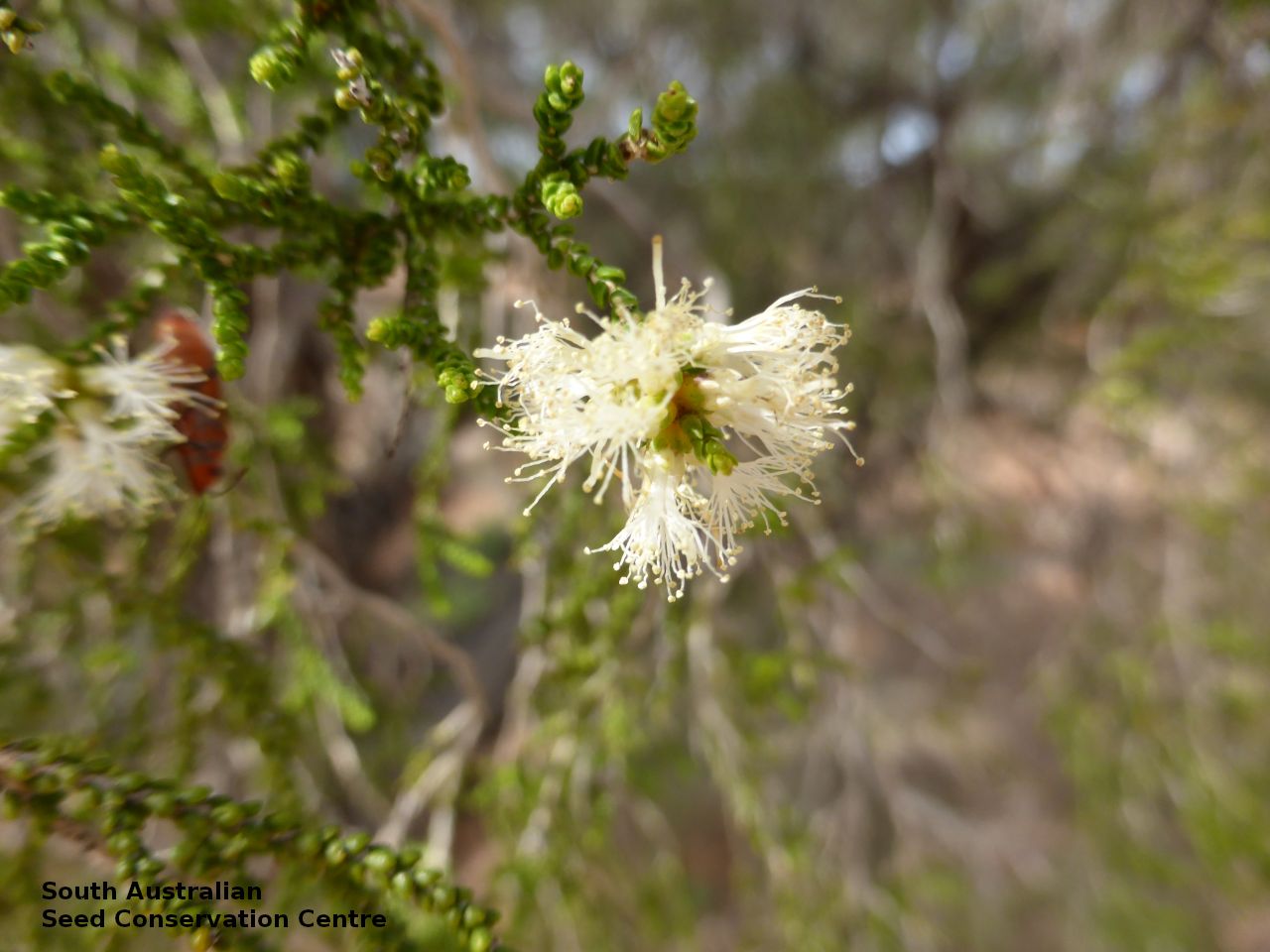
















Common names
Dwarf-leaf Honey-myrtle
Etymology
Melaleuca, from the Greek 'melas', meaning black and 'leucon', meaning white, alluding to the contrasting colours of the bark of the first species described, which is said to have had white branches against a black trunk. Nanophylla, from Greek 'nanos',, meaning dwarf and 'phyllon' meaning leaf; referring to its very small leaves.
Distribution and status
Found in the north-west part of South Australia, growing on the edges of saline, gypseous mound. Also found in Western Australia. Native. Rare in South Australia. Very rare in Western Australia.
Herbarium region: North Western
AVH map: SA distribution map (external link)
Plant description
Shrub or small tree to 5 m high; glabrous except for the tawny-pubescent young shoots. Leaves alternate, broadly ovate, to 1.5 mm long and 1 mm wide; rounded, on the lower surface; slightly keeled, glandular and obscurely 3-nerved, truncate at the base. Inflorescence in clusters in leaf axils, forming short spikes with pale-yellow flowers. Flowers irregularly possibly dependent on rain events. Fruits are grey-brown, scaly, woody, spherical capsule to 2.5 mm long, in short spikes on woody stems. Seeds are brown pyramid-shaped seed to 1.5 mm long and 0.5 mm wide. Seed embryo type is folded.
Seed collection and propagation
Collect seeds between January and December.
Collect capsules that are large and hard, with closed valves.
A total of 12,000 seeds (0.94g) of this rare tea-tree was collected from Waldanna Soak in the Great Victoria Desert in 2014 with the support of the Australian Seed Bank Partnership. Place the capsules in a tray and leave to dry for at least two weeks or until all the valves are open. Then place all the capsules into a bucket with a lid if possible and shake hard to dislodge the seeds from the capsules. Use a sieve to separate the seeds from the capsules. The fine material will contain the seeds and other flowering material. It is very difficult to separate the seeds from this other material as the size, shape and weight are very similar, however the seeds will be a darker brown. Store the seeds with a desiccant such as dried silica beads or dry rice, in an air tight container in a cool and dry place. Seeds are non-dormant, viable seed should germinate readily.
| Location | No. of seeds (weight grams) | Number of plants | Date collected | Collection number Collection location | Date stored | % Viability | Storage temperature |
|---|---|---|---|---|---|---|---|
| BGA MSB | 6,000 (0.47 g) 6,000 (0.47 g) | 25 | 20-Sep-2014 | DEM7664 North Western | 1-Jan-2016 | 90% | -18°C |
Number of plants: This is the number of plants from which the seeds were collected.
Collection location: The Herbarium of South Australia's region name.
% Viability: Percentage of filled healthy seeds determined by a cut test or x-ray.